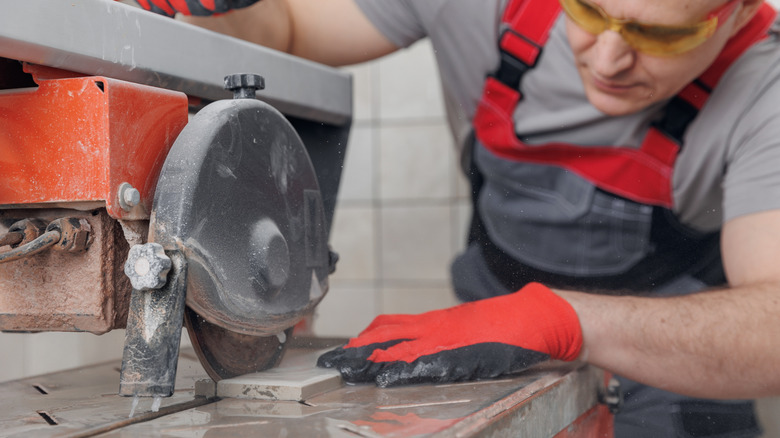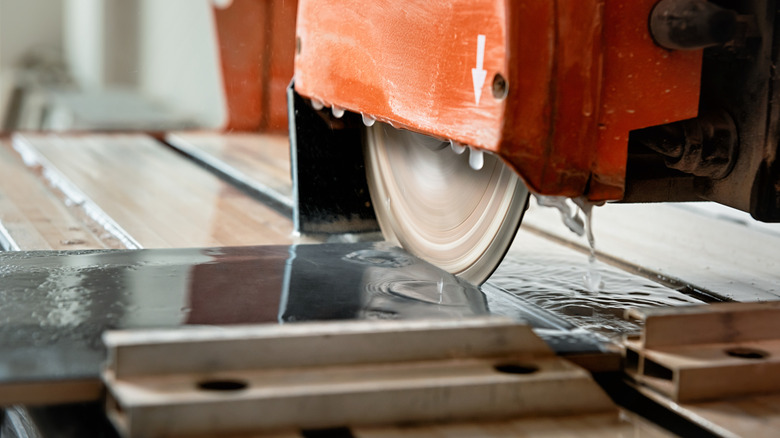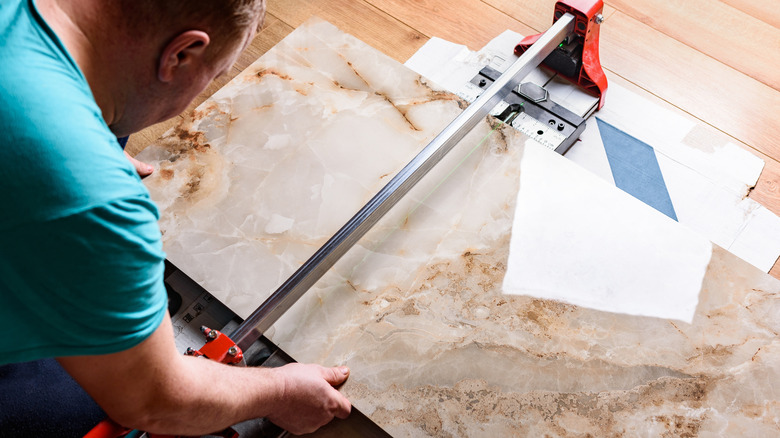Wet Saw Vs Tile Cutters: How To Know Which Is Best For Your Home Improvement Projects
Installing tile as a DIY project isn't as difficult as it might seem at first glance. As long as you keep in mind any mistakes to avoid when tiling, approach the project with patience, and utilize high-quality materials, your tiling job should go off without a hitch. But what about those awkward edges where you need a tiny sliver of material to properly fill the space? Unless you luck out and have a perfectly sized floor or wall, you'll probably have to cut a few tiles down to size. This can be one of the more challenging parts of installing tile, but choosing the right tools can make the process run much more smoothly.
When it comes to cutting tile, you have two main options for tools: a wet saw and tile cutters. While they're meant to perform a similar purpose, your specific situation and the material you're working with will dictate which is the better choice for you. In an exclusive interview with House Digest, Miron Moalem, owner of LA Home Construction, shared his advice on how to decide. "Generally, a wet cut is preferable and cleaner," he said, but the situation can get more complex for DIYers. "However, there are several disadvantages to using a wet saw, the primary one being that it requires significant expertise."
When to use a wet saw
According to Moalem, wet saws are typically more powerful than tile cutters, so they're the safer bet if you're not sure which tool to use. "Wet saws are suitable for all types of tiles, including glass tiles and those with high PEI ratings, as they can reduce friction during cutting and feature a fast-spinning blade that can pierce even the hardest materials," he said during his exclusive interview with House Digest. "A wet saw should be able to handle tasks that a tile cutter cannot." If you're working with especially durable tile, it's likely that attempting to use a tile cutter will just be a waste of time.
There are two major downsides to wet saws, however: difficulty of use and a high price point. Wet saws present a significant learning curve, especially if you're an inexperienced DIYer, and can create a ton of mess. These saws have to be used outdoors, and it will probably take some practice until you feel confident making precise cuts.
Because wet saws are more commonly used by professionals, it also makes sense that they have a high price tag. "You should expect to pay more than $500, if not thousands of dollars, for wet saws, which are high-quality power tools with diamond blades and water spray systems. This is especially true for high-quality models. In contrast, a high-quality tile snapper will cost you a few hundred dollars at most," Moalem said. If you only need a wet saw temporarily, however, there's always the option to rent this expensive tool for your next home tiling project.
When a tile cutter can do the job
They may not be as powerful as wet saws, but there's still a time and a place for tile cutters. In his exclusive interview with House Digest, Moalem shared exactly how a tile cutter works. "In a two-step procedure, the tile is first scored before being manually snapped by tile cutters. The tile cutter has a base on which the tile is placed and a specific scoring knife for making deep cuts in the tile. The tile is scored before being manually snapped," he said. This is a much simpler machine and process, so it's ideal for beginners or those who just need to make a couple of simple cuts on a material that isn't particularly heavy duty.
"Due to their simplicity, portability, battery-free nature, and ability to produce straight cuts, tile cutters are ideal for novices. However, they are best suited for modest projects and soft tiles," Moalem said. "Tough tiles, such as outdoor porcelain tiles or glass tiles, cannot be handled by tile cutters," he added.
Tile cutters also won't help if you need to make any curved cuts — for example, if you're installing floor tiles around structural poles. If the demands of your project align with a tile cutter's abilities, you'll likely be able to save some money on tools and utilize a simpler process when making the cuts. If not, choosing a wet saw from the jump can save you a ton of time and effort.


